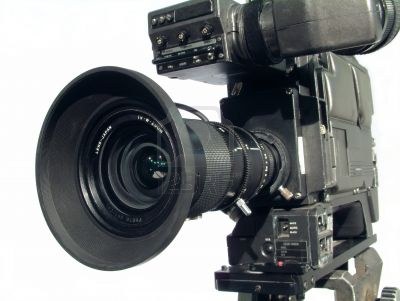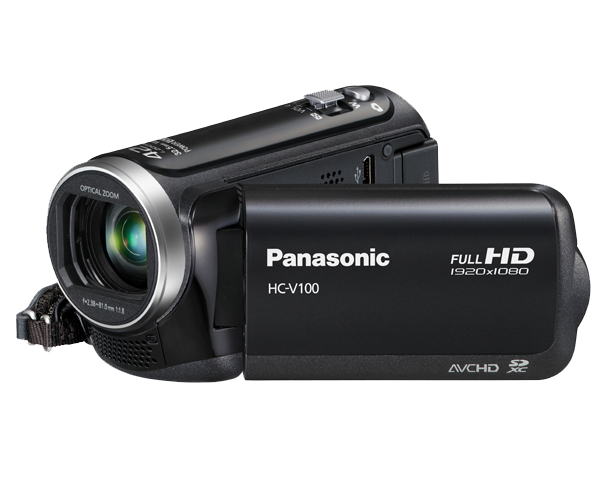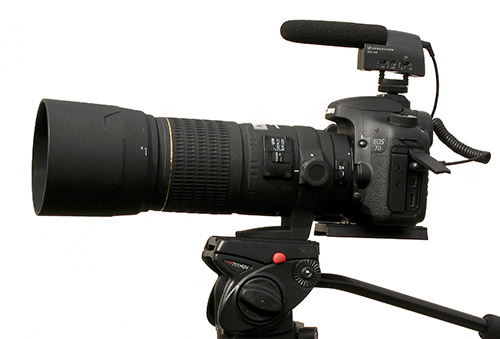There are many differences between basic camcorders and expensive professional video cameras. The more expensive a camera is, the better it should be overall. Technology is evolving fast, and most HD camcorders are available to anyone for an affordable price. Even the simplest video cameras can provide high quality footage in the right conditions, so why bother spending a fortune on expensive cameras?
Professional cameras offer benefits which are impossible with a camcorder.
You have the access to interchangeable lenses in addition to bigger image sensors. Lenses influence the way that light reflects on the image sensor, how the depth of field manifests itself on the image, as well as frame sizes. They allow you to use 35mm lenses, and you can change them whenever you want. They have better optical zoom range and a complete set of manual functions along with various other features to achieve professional quality footage with complicated settings, but you do have to pay quite a lot of money for those features. If you’re a professional filmmaker, you need to have the right equipment, which adds up to be quite expensive altogether, but if you’ve created, for example, a very successful feature-length film, it certainly pays off. The quality of the motion images is much better when showcased on movie theatre screens or LCD, LED and Plasma TVs that have high definition image quality. When working on a serious project, whether it is a documentary, an interview, a TV show or a full length film, you will need a professional video camera or movie camera that can really show the high definition, and the spectrum of different types of them is very vast, just like the price.
Basic camcorders are made for different purposes than professional cameras. They are intended for home use, and most provide high definition footage, but they are not up to the standard of a professional camera, and they still have that flat look to them without much depth of field. There are, however, feature length films made entirely with consumer grade camcorders – for example, The Blair Witch Project or Paranormal Activity. Found footage films are usually the type of films that can be created with such cameras, they don’t require very high detail cameras to appear realistic.
There are also prosumer grade cameras, which are hybrids between consumer camcorders and professional grade cameras. They come at an affordable price for a serious consumer and look similar to consumer grade cameras, but they give you full control and have many additional features packed into a compact, fully portable camera. They also have a higher resolution than cheap camcorders that deliver very sharp images.
There are also DSLR (Digital Single Lens Reflex) cameras available at decent prices – they have a live digital viewing mechanism that focuses on the image through the lenses, and they have standard lens mounts so that you can use normal lenses for them. These cameras look and feel like classic SLR cameras, but compared to prosumer models, they’re bigger and bulkier. SLR cameras allow you to see exactly what the camera sees through the viewfinder, this is useful for precision. They also have much higher quality, more detail and noise-free than consumer or even prosumer cameras.
An amateur enthusiast or a film student can work with a more basic camera or, if possible, a prosumer-grade camera at the beginning, though. As they aren’t professionals yet or aren’t employed and are filming as a hobby, it is not necessary to save up for a fancy TV camera, when there are more and more affordable and accessible camcorders available for anyone nowadays. The midrange and semi-pro video cameras provide very good quality footage already, and the standards are rising as technology is evolving, so they also become cheaper.
Working with what you’ve got enhances your filming skills because you’re forced to figure out efficient ways to showcase your ideas, when you don’t have a Hollywood studio with expensive cameras at your service. There are many ways to improve your shots to better tell a story – for example, effectively using lighting, and not necessarily expensive studio lights for the standard three-point lighting method, but coming up with new ways to illuminate objects. You can also make an impact with innovatively shot angles with the ways you use a tripod, a dolly or a slider in order to tell a story, and they don’t need to fit the norms. To enhance the visual images, you may also use audio for a greater effect, and even if the image quality isn’t the best, fitting audio tracks would even out the experience. The way a message is portrayed is completely up to the cameraperson, and they may use this freedom with whichever equipment is available. It helps using your imagination, so when you get your hands on a prosumer-grade camera, you would be able to use it very effectively, because a camera is only as good as the person behind it.
So do you really need a costly, but professional camera with very high image quality? It depends on what you use it for. If you’re making a feature-length film to be showcased on big screens, you definitely need a TV or movie camera to be up to that standard, let alone all the other equipment. On the other hand, if you’re just starting out, it is sufficient to get an inexpensive camcorder, because most have HD to begin with. In the end, only cinema fanatics and videophiles notice the tiny differences between them – the majority of people will overlook them.



